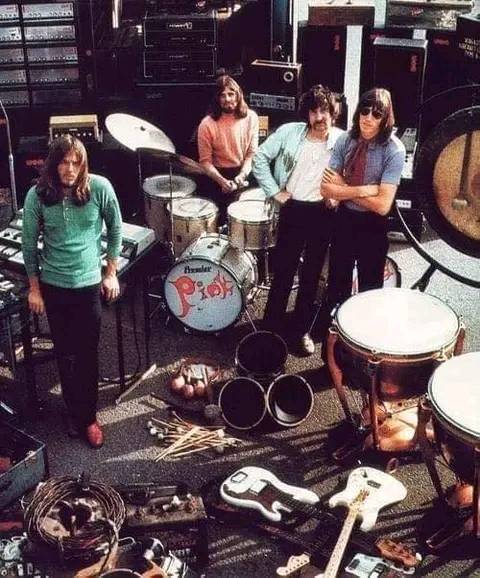News
Is Pink Floyd Acid Rock? A Dive into Genre and Legacy
Think psychedelic rock and a certain British band likely comes to mind. With their otherworldly soundscapes and consciousness-expanding aesthetic, Pink Floyd didn’t just help define psychedelic rock in the late 60s—they expanded the boundaries of the genre unlike any other act. From their early experimental records to their undisputed masterpieces, Pink Floyd took rock music on hypnotic, surreal journeys to unlock hidden dimensions of the mind. Their avant-garde and pioneering use of effects created an extraordinarily transportive experience that became their signature “acid rock” style. Even decades later, Pink Floyd’s legacy as innovators and icons of trippy, psychedelic rock remains cemented.
Table of Contents
What is Acid Rock?
Emerging from the raw garage rock movement of the 1960s, acid rock became the grittier, heavier sibling of psychedelic rock. The term loosely arose as the backdrop to the psychedelic subculture’s drug-fueled quests for higher consciousness. Lyrically and sonically, the genre encapsulated both the blissful and challenging extremes of the acid trip experience.
The hallmarks of acid rock are distorted, effects-laden guitar riffs creating an intense, trance-inducing sound. Improvisational and often meandering jams explore the outer limits of musicality and perception. While light on structured lyrics, references to altered states of mind, spirituality, and psychedelic imagery abound. Propulsive rhythms fused with Eastern-influenced scales mirror the sensory overload of an LSD trip.
Leading acid rock acts like the Jimi Hendrix Experience, the Grateful Dead, and Jefferson Airplane exemplified the genre’s desire to musically replicate the psychedelic headspace. However, as acid rock morphed across the late 60s and 70s, it splintered into diverging hard rock and progressive rock directions. The fluid boundaries between acid rock and other contemporaneous genres underscore the style’s emphasis on breaking conventions.
Is Pink Floyd Acid Rock?
While Pink Floyd is indelibly tied to the emergence of 1960s psychedelic and acid rock, it would be reductionist to solely classify them as an “acid rock” band. Their 1967 debut The Piper at the Gates of Dawn, led by the pioneering genius yet troubled Syd Barrett, undoubtedly ignited the psychedelic revolution in Britain. Barrett’s avant-garde vision filled the album with improvisational jams, cosmic lyrics, and experimental production that encapsulated the exploratory ethos of early acid rock.
However, Pink Floyd’s musical legacy would vastly transcend those early innovations. As the 1970s arrived, albums like The Dark Side of the Moon and Wish You Were Here established Pink Floyd as pioneers of progressive rock sophistication. Their intricate songwriting, philosophical contemplation, and masterful studio techniques broke new ground for the genre. Though traces of their psychedelic roots endured, Pink Floyd’s ever-evolving sound defied and expanded the boundaries of rock over their storied career. In the end, no single category can encompass the band’s fearless musical vision.

Still unsure what genre defines Pink Floyd’s enigmatic sound? Click here to dive deeper into the question “What Genre Is Pink Floyd?”
What’s the difference between Acid rock vs Psychedelic rock?
While acid rock and psychedelic rock emerged from the same 1960s counterculture movements, they diverged into two distinct subgenres of rock, each with their own sound and characteristics.
Psychedelic Rock
- Broader genre that encompassed a wide range of experimental and psychedelic styles
- Incorporated diverse influences – Eastern sounds, unconventional structures, tape loops, feedback, etc.
- Often had whimsical, surreal lyrical themes
- Emphasized “trippy” novelty effects and studio experimentation
- Bands like the Beatles, Jefferson Airplane, Pink Floyd epitomized the diversity of psychedelic rock
Acid Rock
- Harder, rawer, more aggressive subgenre of psychedelic rock
- Centered on heavy, distorted guitars and screamed vocals
- Improvised instrumental jams were common
- Lyrics referenced psychedelic themes and altered states
- Aimed to channel the intensity of an LSD trip through loud, heavy sounds
- Bands like Cream, Jimi Hendrix, Blue Cheer pioneered the acid rock style
| Psychedelic Rock | Acid Rock | |
|---|---|---|
| Origins | Emerged from 1960s counterculture | Evolved from garage rock |
| Sound | Diverse, eclectic, whimsical | Raw, heavy, aggressive |
| Guitars | Effects-laden guitars | Heavy distortion |
| Vocals | Melodic vocals | Screamed vocals |
| Song Structures | Unconventional structures | Improvisational jams |
| Lyrics | Surreal, psychedelic themes | Drug references |
| Examples | Beatles, Jefferson Airplane | Cream, Jimi Hendrix |
The distinction between the genres was never absolute, with some bands like the Grateful Dead blending both sounds. But in general, acid rock pursued a heavier sonic assault compared to the diverse experimentation of psychedelic rock. It distilled psychedelic rock’s essence into its most raw and intense form.
While acid rock prized intensity and distortion, psychedelic rock valued exploration across a spectrum of consciousness-expanding sound. But rigid genres seldom encapsulate innovators like Pink Floyd, whose vision voyaged beyond classifications into uncharted territory. Their legacy reminds us – that dissolving boundaries expands possibilities.




